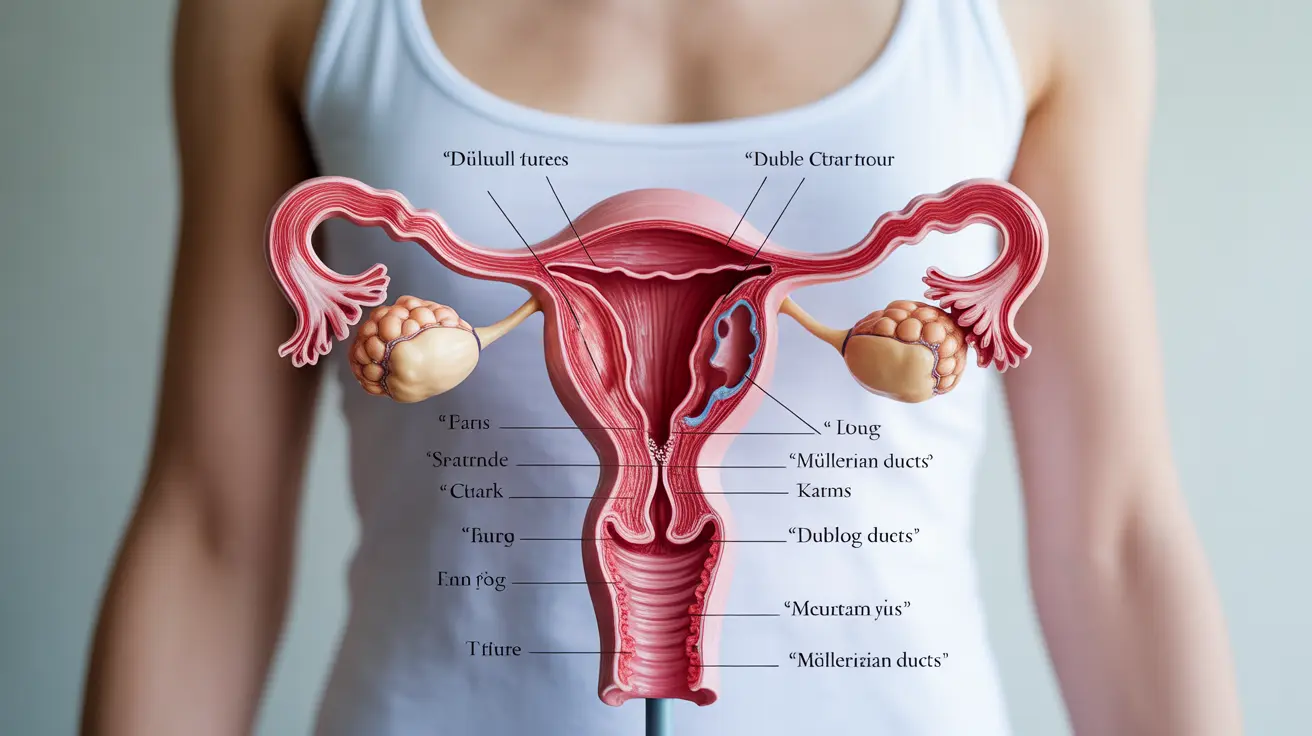A double uterus, medically known as uterus didelphys, is a rare congenital condition where a female is born with two separate uterine cavities instead of one. This unique anatomical variation develops during fetal development and can significantly impact reproductive health and pregnancy outcomes. Understanding this condition is crucial for proper medical management and family planning.
While relatively uncommon, affecting approximately 1 in 3,000 women, a double uterus requires careful medical attention and monitoring, especially during pregnancy. This comprehensive guide explores the causes, symptoms, and implications of having two uterus structures.
Understanding the Development of a Double Uterus
During early fetal development, the female reproductive system typically forms from two tubes called Müllerian ducts. These ducts normally fuse to create a single uterus. However, when this fusion process is incomplete, it results in a double uterus formation.
This developmental variation can occur in different forms, sometimes accompanied by a double cervix or even a divided vagina. The specific configuration can vary among individuals, affecting how the condition impacts their health and reproductive capabilities.
Common Signs and Symptoms
Many women with a double uterus may not realize they have the condition until they undergo medical imaging for other reasons. However, several symptoms might indicate its presence:
- Unusually severe menstrual pain
- Irregular or heavy menstrual bleeding
- Recurring miscarriages
- Pain during intercourse
- Unusual pressure in the pelvic region
Impact on Pregnancy and Fertility
Having a double uterus can present unique challenges during pregnancy, though many women with this condition can successfully carry pregnancies to term. The main considerations include:
Pregnancy Risks
Women with a double uterus may face increased risks during pregnancy, including:
- Preterm delivery
- Breech positioning of the baby
- Potential need for cesarean delivery
- Higher likelihood of pregnancy loss
Fertility Considerations
While a double uterus doesn't necessarily cause infertility, it may impact reproductive outcomes. Each uterine cavity might be smaller than normal, potentially affecting fetal growth and development. Regular monitoring during pregnancy becomes essential for optimal outcomes.
Diagnosis and Medical Management
Diagnosis typically involves various imaging techniques, including:
- Ultrasound examinations
- MRI scans
- Hysterosalpingogram (HSG)
- Physical examination
Management approaches focus on addressing specific symptoms and complications rather than treating the anatomical variation itself. Regular monitoring becomes particularly important during pregnancy to ensure proper fetal development and prepare for potential complications.
Treatment Options and Support
While there's no need to "correct" a double uterus if it's not causing problems, several treatment options exist for managing complications:
- Hormonal treatments for menstrual irregularities
- Surgical interventions for severe cases
- Specialized prenatal care during pregnancy
- Pain management techniques
Frequently Asked Questions
What is a double uterus (uterus didelphys) and how does it occur?
A double uterus occurs when the Müllerian ducts fail to fuse properly during fetal development, resulting in two separate uterine cavities. This congenital condition develops before birth and is not preventable or caused by any external factors.
What symptoms or menstrual problems might indicate the presence of a double uterus?
Common indicators include severe menstrual pain, irregular or heavy periods, unusual pelvic pressure, and pain during intercourse. However, many women may be asymptomatic and discover the condition during routine medical imaging.
How does having two uterus structures affect pregnancy and childbirth risks?
Two uterus structures can increase risks of preterm delivery, breech positioning, and the need for cesarean section. Each uterine cavity may be smaller than normal, potentially affecting fetal growth. Close monitoring during pregnancy is essential.
Can a double uterus cause infertility or increase the chance of miscarriage?
While a double uterus doesn't necessarily cause infertility, it may increase the risk of miscarriage and premature birth. Many women with this condition can still conceive and carry successful pregnancies with proper medical care.
What treatment options are available for managing complications related to a double uterus?
Treatment options include hormonal therapy for menstrual irregularities, surgical interventions in severe cases, and specialized prenatal care during pregnancy. The approach is typically tailored to individual symptoms and complications.




